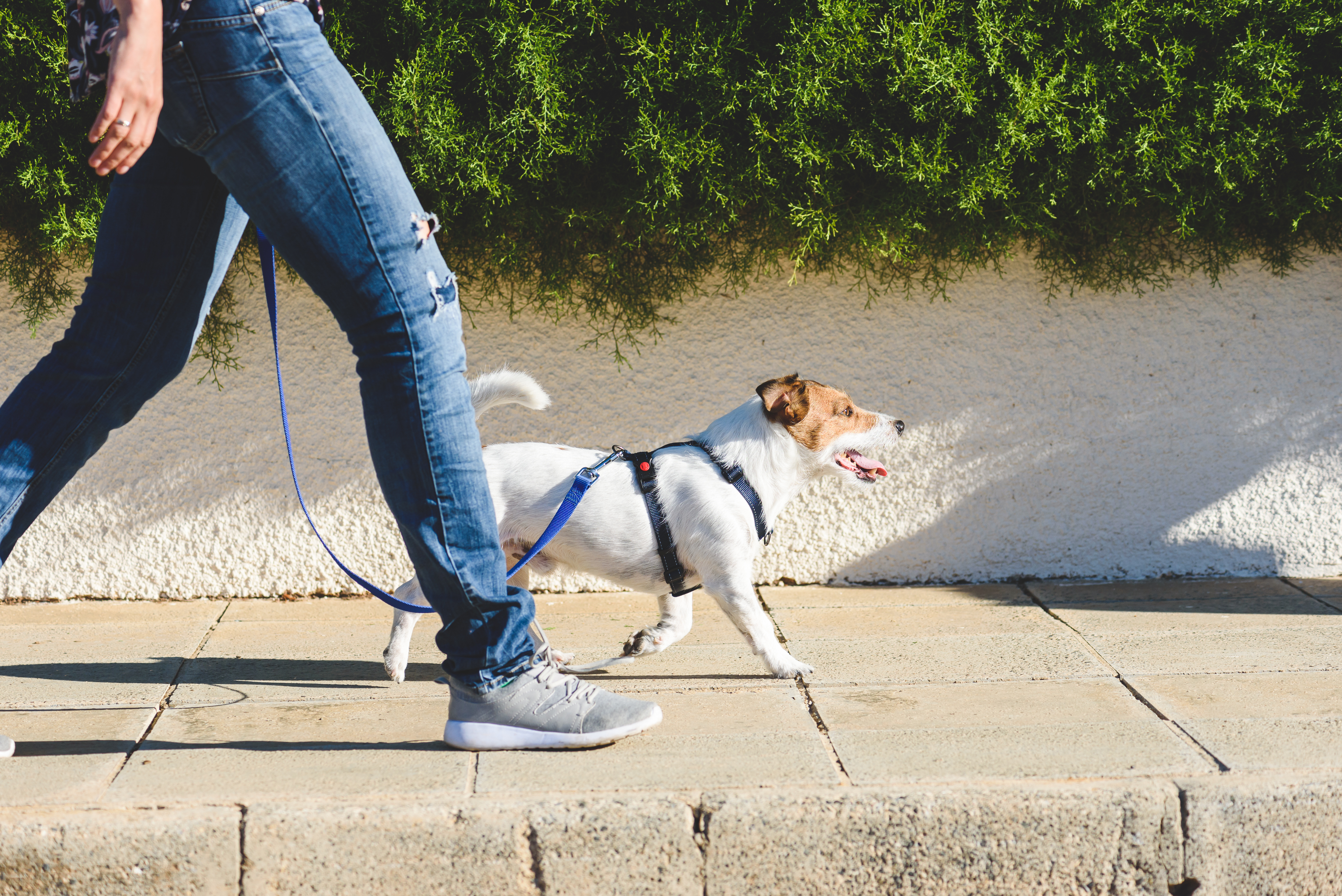How to Calm an Anxious Dog: Natural Tips for Stress Relief During Dog Anxiety Awareness Week
Posted by Greg C. on May 11, 2025
You know your dog better than anyone. You can tell when something feels “off”—those sad eyes, the pacing, the panting that doesn’t stop. If your dog gets anxious during thunderstorms, fireworks, or even when you grab your keys, you’re not alone. Anxiety affects millions of dogs, and as loving pet parents, it can feel overwhelming to watch them struggle.
That’s why Dog Anxiety Awareness Week is more than a pet calendar event—it’s a chance to pause and focus on your dog’s emotional wellness. Let’s talk about how to recognize anxiety, what causes it, and how you can support your dog with natural, safe strategies that actually help them feel calm.
Recognizing Signs of Anxiety in Dogs
Dogs express anxiety in many different ways. Some are vocal, while others withdraw. Knowing the signs helps you respond early, before anxiety spirals into long-term stress.
Watch for these common signs of anxiety in dogs:
- Excessive barking or whining, especially when alone
- Shaking, panting, or pacing without a clear cause
- Hiding in closets or under furniture
- Destructive chewing or digging
- Changes in eating habits or loss of appetite
- Bathroom accidents inside the home
- Licking paws or chewing fur excessively
Each dog is different. You might notice subtle shifts in energy, clinginess, or even a refusal to play. These are all signals your dog is asking for help.
Common Triggers of Stress in Dogs
Dogs thrive on routine and feel safest when they know what’s coming next. But everyday life throws surprises—and that’s when stress shows up.
Typical anxiety triggers include:
- Loud sounds: fireworks, thunderstorms, vacuums
- Separation: being left alone for long hours
- New environments: moving houses or changing routines
- Travel: car rides, hotel stays, or plane trips
- Strangers or unfamiliar animals: visitors, new pets
- Vet and grooming visits: new smells, handling, or past trauma
Each trigger may not cause panic right away, but over time, repeated stress can wear down your dog’s sense of security.

Natural Strategies to Calm Your Dog
You don’t always need medication to manage anxiety. Natural, daily habits can help ease your dog’s nerves and build long-term confidence.
Daily Routines
Dogs feel more secure when life is predictable. A stable routine reduces their mental load.
- Feed and walk your dog at consistent times
- Incorporate short play or training sessions to burn energy
- Avoid long gaps alone if possible—or break them up with check-ins
- Speak calmly and avoid overreacting to anxious behavior
Even simple consistency can ground your dog and help them feel safe.
Safe Spaces & Comfort
When anxiety spikes, dogs often look for an escape. Give them one that feels like home.
- Create a cozy space with soft blankets and toys
- Use calming background noise or classical music
- Allow your dog to retreat when overwhelmed—don’t force interaction
- Try natural tools like calming sprays or anxiety wraps
This setup becomes your dog’s emotional anchor, especially during storms or busy gatherings.
Calming Chews & Enrichment
Dogs naturally chew to self-soothe. Offering safe, satisfying chews during stress can redirect energy and ease tension.
Try these enrichment ideas:
- Long-lasting bully sticks or other natural chews
- Puzzle feeders and treat-dispensing toys
- Frozen dog-safe fruits like banana or carrot
- Daily chew time after exercise for relaxation
Avoid: Rawhide, artificial flavors, and synthetic calming agents—these may upset digestion or add to stress.

Understanding Separation Anxiety
Separation anxiety represents one of the most challenging behavioral issues dog owners face, affecting an estimated 20-40% of dogs who visit veterinary behaviorists. Unlike general anxiety, separation anxiety stems from your dog's deep-rooted pack instincts, like when their "family" disappears, it triggers an overwhelming fear of abandonment. This isn't just missing you; it's a genuine panic response that can escalate quickly without proper intervention.
Beyond the obvious signs, watch for these specific indicators:
- Frantic vocalizations (barking, howling, whining) that begin within minutes of departure
- Destructive behaviors concentrated around exit points—scratching doors, chewing window sills
- Pre-departure anxiety symptoms: following you closely, panting when you grab keys or put on shoes
- Post-departure accidents, even if your dog is fully house-trained
- Attempts to escape (jumping fences, breaking through screens)
- Refusal to eat when alone, even with favorite treats
- Shadow behavior—constantly needing to be in your sight
Strategic approaches to managing separation anxiety:
- Implement "graduated departures"—start with 2-3 minutes and slowly increase time as your dog builds confidence
- Establish pre-departure rituals that stay low-key (avoid dramatic farewells that amplify anxiety)
- Create positive associations with alone time through special toys, food puzzles, or frozen Kong treats
- Use natural calming aids: lavender or chamomile diffusers, white noise machines, or soft classical music
- Consider modern solutions like interactive pet cameras that allow two-way communication
- Practice "invisible departures"—leave without your dog noticing, gradually building tolerance
- Provide high-value, long-lasting chews specifically during your absence
Remember that conquering separation anxiety requires time and consistency. Most dogs show improvement within 2-4 weeks of implementing these strategies, though severe cases may need 2-3 months. Progress isn't always linear—some setbacks are normal as your dog learns to feel secure in your absence.
Why Natural Bully Sticks Can Help
Chewing isn’t just physical—it releases endorphins that soothe anxiety. That’s why many dog parents choose bully sticks as a safe outlet for stress.
BSD’s bully sticks offer a clean, simple, and protein-rich solution for anxious pups.
Here’s why they work:
- 100% single-ingredient: Just beef, no chemicals or fillers
- Fully digestible: Safer than rawhide or synthetic chews
- Long-lasting: Keeps dogs engaged and relaxed
- Satisfies a natural need: Supports self-soothing and mental focus
Plus, Bully Sticks Direct products reflect your values—made with integrity, transparency, and dog-first care. You can feel good giving your pup something that supports both their body and emotions.
When to Consult a Veterinarian
Natural solutions work well for most mild to moderate anxiety. But some dogs need more support.
It’s time to call your vet if:
- Your dog shows intense or frequent panic
- Anxiety results in injury, aggression, or total withdrawal
- You’ve tried routines, chews, and safe spaces with no improvement
- You suspect underlying medical issues
Veterinarians can assess behavior, recommend trainers, or suggest safe, temporary calming aids. You're not alone in finding the right path for your dog.

Support Your Dog During Dog Anxiety Awareness Week (and Beyond)
Your dog may not speak your language, but they feel every emotion deeply. From tail wags to trembling paws, they trust you to help them navigate the world.
Dog Anxiety Awareness Week is a reminder that mental health matters for dogs too. By learning their triggers, building daily routines, and offering safe outlets like BSD’s all-natural bully sticks, you help your dog feel grounded, safe, and loved.
Explore Bully Sticks Direct’s wide-variety of chews and make them a part of your dog’s stress-relief toolkit. Support their emotional wellness the natural way—because calm feels better when it comes from care.
Shop online today and sign up for auto-ship so your supply never runs low again!



